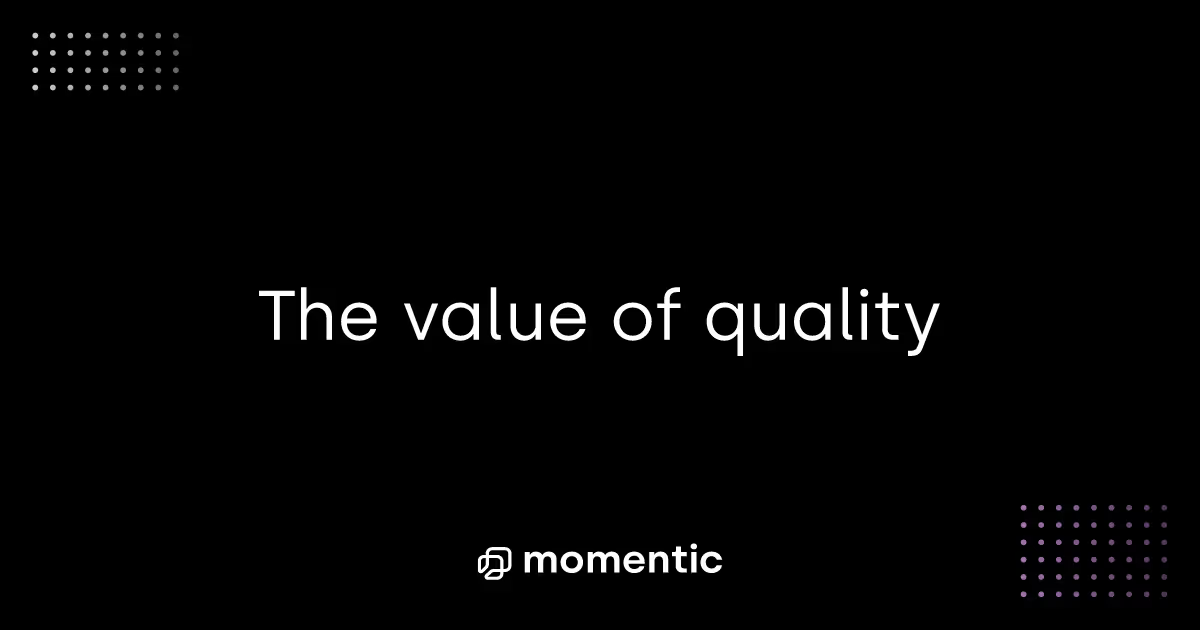AI-Automated Functional Testing: Your Cheat Code For Lightning Fast QA
Right now, speed of deployment is everything if you want to build a successful product.
Elite-performing teams deploy code 208 times more frequently than their competitors. Not only that, their lead times are 106 times faster from commit to deployment than low-performing teams'.
If you're wondering how to achieve this level of efficiency (especially after a couple of years beset by cost cuts and tighter tech budgets), look no further than automated functional testing. Or, more specifically, AI driven automated functional testing.
'Traditionally' automating your functional testing is an easy win for product teams - machines do it excellently and, as automation goes, it's not particularly difficult. However, the efficiency gains traditional automation offers are no longer enough - to turn your QA processes into a major strategic differentiator, you need AI, and you need it now.
Automated Functional Testing Is A Must-Have in 2025
In functional testing, you're validating whether a system meets its specified functional requirements. You are not assessing its performance as it does so.
This is exactly the type of repetitive, boring test that machines excel at and humans hate. Machines don't get bored. Their mind doesn't drift towards dinner, the game at the weekend, or the next coffee run. As well as being inherently faster, they produce more accurate results.
That's why automated functional testing is a no-brainer in 2025. You probably automate some of your functional testing already - now's the time to automate all of it.
Automated Functional Testing: The Quickest Win in Modern QA
Automated functional testing is easy for machines to do, and easy for your engineers to automate, because:
- Functional tests have well-defined inputs and outputs, so tests are very easy to script.
- Functional tests don't usually deal with internal implementation, which facilitates an efficient, black box approach.
- Functional tests run quickly and catch regressions early, making them a perfect candidate for automation in CI/CD pipelines.
But 'Traditional' Functional Testing Automation Isn't Enough Anymore
By 'traditional', we're referring to test automation without AI input. If your team is using Selenium, Cypress, or Playwright to automate tests, this is for you - listen up.
If you're aiming for elite-level release schedules, traditional automation won't get you all the way there anymore.
Above all, setting up test environments, creating test scripts, and maintaining your test suite all require significant amounts of time. Whether you're still on over-the-wall QA or take a more integrated approach, these hours add up and increase your time to market.
The issues don't stop there, however. Here are three barriers that traditional automation can't quite resolve - even if your processes are as efficient as possible.
1. Setup and Tooling Complexity Enforces QA/Engineering Divisions
Traditional automation requires a degree of expertise to set up and run - and this could unwittingly be tying you to outdated QA models for longer than you would like.
Your engineers don't have the bandwidth to deal with complex testing processes. Your QA team is too busy running complex testing processes to fully understand your codebase. Even if these two disciplines sit aside each other, you haven't solved the engineering/QA knowledge silo issue.
You're At Your Limit When It Comes to Test Coverage
The time and resource cost of traditional automation creates a test coverage ceiling. So, you have to compromise. You make tough decisions on testing priorities that strike a balance between 'testing more, but slowly', and 'testing less, with more risk'.
As well as leaving code untested, these priorities often don't cover edge cases or negative testing. So, your happy paths remain smooth and bug free for users, but as soon as users need to interact with your software in a way that's unusual or unexpected, the risk of encountering a defect increases significantly.
Cross Browser And Cross Device Testing
Automating web app functional testing is more complex than automating testing for native apps. This is because of the variance in browsers and devices that users will access your app from.
To automate effectively, you'll need to run tests across many different environments, and implement the infrastructure (virtual machines, containers, cloud-based grids) to do so. On top of that, it's difficult to catch visual UI regressions without a test that 'sees' your app, whilst traditional test scripts (e.g., Selenium) rely on exact locators like XPath or CSS selectors which break when you update the UI.
AI-Driven Functional Testing Is The Only Way To Truly Streamline QA
Until now, we've tolerated the resource intensity of traditional automation because it was the best option available. We don't need to anymore - especially as time/resource pressure mounts for engineering teams.
Your product is facing more competitors than ever before, and as external factors squeeze tech budgets, you're constantly looking for ways to do more with less. Building a standout product is, increasingly, logistically challenging.
The right approach to functional QA for software teams can really make a difference to your ability to build, sell, and maintain top quality software. Once a cumbersome cost center, streamlined QA processes are now a key strategic differentiator for teams looking to write even better code and even faster updates.
To maximize this potential, you need to eliminate the inefficiencies automated functional tests create. AI is the way to do this - and whilst many businesses see AI as a long-term investment, implementing now means you're ahead of the pack. Shifting to AI now brings efficiency gains others don't have yet; shifting later means you'll be playing catch up.
Here's an at-a-glance guide comparison which highlights just how many resources AI automated functional testing saves, and how these streamline your QA.
AI Functional Testing: The End of The Engineering/QA Split?
Even with the most streamlined approach in the world, separate engineering and QA processes will slow you down during functional testing.
Perhaps AI's biggest advantage is that it offers the time and resource savings to put functional testing back into the hands of your engineers. Here's how this works:
- An engineer writes a section of code
- The engineer tests that code with a functional test they built in seconds using an AI-based codeless automation tool
- The engineer makes any fixes necessary before writing the next section of code
- The AI gets smarter the more it tests, with insights into high-risk, high-priority areas that help engineers minimize defects and prioritize their time
This immediately eliminates the bottlenecks associated with external QA, whilst adding practically nothing to engineer workloads. It also makes it significantly easier to shift testing processes left, so that you can test early and often to catch issues when they are easiest to fix.
The end of separate QA has been a long-time coming. Barring a few complex edge cases and more exploratory testing, there's nothing in QA that humans can do better than machines. Realizing this - and adjusting your processes accordingly - is probably the greatest efficiency gain that AI offers.
Momentic: No Nonsense Functional Testing Automation
Momentic makes it 3x faster for our team to write and maintain end to end tests.
Alex Cui, CTO, GPTZero
Momentic's AI functional testing tools allow you to test more thoroughly than ever in a fraction of the time you need for human QA. Here why:
- Natural language processing allows your engineers to write tests in plain English - no code needed.
- Self healing tests maximize reliability, whilst minimizing the time your team needs to spend on maintaining your test suite.
- 24/7 testing and parallel tests eliminate bottlenecks, expand coverage, and speed up QA timelines.
- Intelligent analytics tools highlight high-priority, high-risk areas, so your engineers can focus their time on areas that matter most.
The result: you release better quality code faster. Your engineers have the room to focus on cool new stuff for the next release. You can dedicate human testing resources to the most complex tests and exploratory testing which adds real value.
If, like Alex and his team, you're keen to save over two thirds of the time you spend on key testing processes, why not schedule a conversation with our team?


